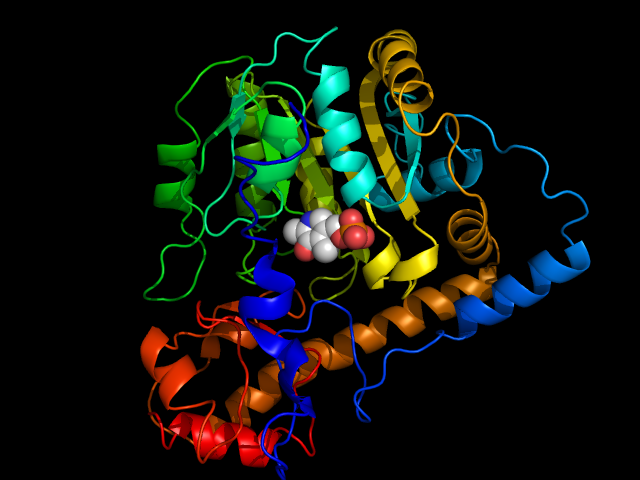Transaminase

|
WikiDoc Resources for Transaminase |
|
Articles |
|---|
|
Most recent articles on Transaminase Most cited articles on Transaminase |
|
Media |
|
Powerpoint slides on Transaminase |
|
Evidence Based Medicine |
|
Clinical Trials |
|
Ongoing Trials on Transaminase at Clinical Trials.gov Clinical Trials on Transaminase at Google
|
|
Guidelines / Policies / Govt |
|
US National Guidelines Clearinghouse on Transaminase
|
|
Books |
|
News |
|
Commentary |
|
Definitions |
|
Patient Resources / Community |
|
Patient resources on Transaminase Discussion groups on Transaminase Patient Handouts on Transaminase Directions to Hospitals Treating Transaminase Risk calculators and risk factors for Transaminase
|
|
Healthcare Provider Resources |
|
Causes & Risk Factors for Transaminase |
|
Continuing Medical Education (CME) |
|
International |
|
|
|
Business |
|
Experimental / Informatics |
Editor-In-Chief: C. Michael Gibson, M.S., M.D. [1]
Overview
In biochemistry, a transaminase or an aminotransferase is an enzyme that catalyzes a type of reaction between an amino acid and an α-keto acid. Specifically, this reaction (transamination) involves removing the amino group from the amino acid, leaving behind an α-keto acid, and transferring it to the reactant α-keto acid and converting it into an amino acid. The enzymes are important in the production of various amino acids, and measuring the concentrations of various transaminases in the blood is important in the diagnosing and tracking many diseases. Transaminases require the coenzyme pyridoxal-phosphate, which is converted into pyridoxamine in the first phase of the reaction, when an amino acid is converted into a keto acid. Enzyme-bound pyridoxamine in turn reacts with pyruvate, oxaloacetate, or alpha-ketoglutarate, giving alanine, aspartic acid, or glutamic acid, respectively.
The presence of elevated transaminases can be an indicator of liver damage.
Transaminases in amino acid metabolism in animals
Animals must metabolize proteins to amino acids, at the expense of muscle tissue, when blood sugar is low. The preference of liver transaminases for oxaloacetate or alpha-ketoglutarate plays a key role in funneling nitrogen from amino acid metabolism to Asp and Glu for conversion to urea for excretion of nitrogen. Similarly, in muscles the use of pyruvate for transamination gives Ala, which is carried by the bloodstream to the liver. Here other transaminases regenerate pyruvate, which provides a valuable precursor for gluconeogenesis. This alanine cycle is analogous to the Cori cycle which allows anaerobic metabolism by muscles.
References
- Ghany, Marc & Hoofnagle, Jay H. (2005). Approach to the Patient With Liver Disease. In Dennis L. Kasper, Anthony S. Fauci, Dan L. Longo, Eugene Braunwald, Stephen L. Hauser, & J. Larry Jameson (Eds.), Harrison's Principles of Internal Medicine (16th Edition), pp. 1814–1815. New York: McGraw-Hill.
- Nelson, David L. & Cox, Michael M. (2000). Lehninger Principles of Biochemistry (3rd ed.), pp. 628–631, 634, 828–830. New York: Worth Publishers.
See also
- Valproic acid - a GABA transaminase inhibitor
External links
- Transaminases at the US National Library of Medicine Medical Subject Headings (MeSH)